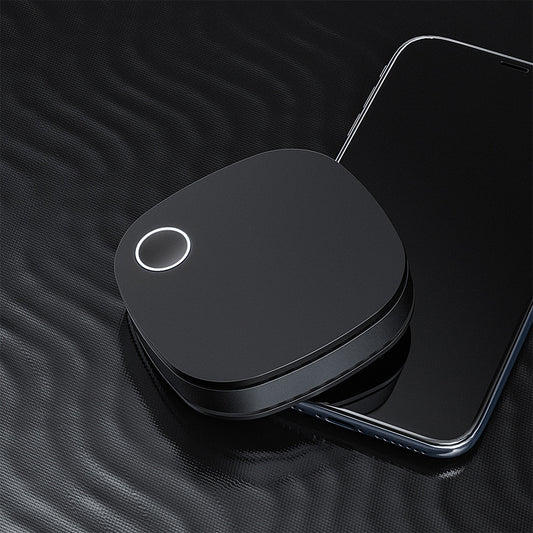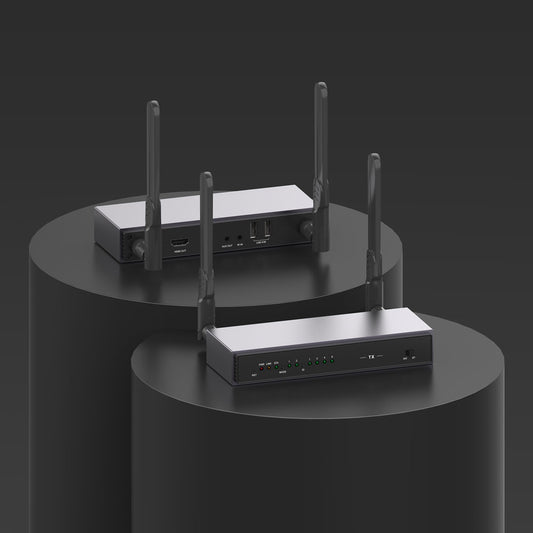
What Is A Wireless Presentation System?
Commercial systems for wireless presentations, as opposed to consumer wireless dongles for screen mirroring, are meant to promote teamwork during meetings and allow several presenters to share ideas, concepts, and films without needing to plug in a lengthy connection. These crucial elements would typically be present in a normal system because they were created with collaboration in mind:Multiple presenters-The majority of systems support 16 or more different presenters and ship with at least two collaboration buttons.
Market leaders in this space use content encryption to prevent unauthorized users from wirelessly "listening in" or recording the presentation.
What Are The Common Wireless Presentation System Methods?
The most common method was a button-based wireless presentation system, followed by those linked with AV control systems and Wi-Fi Hubs.
Buttons
These are among the most available in public, and using them is relatively simple. You only need to insert a button or "puck" into your laptop or other device to establish a connection with the projector, then tap it to begin presenting. The button encrypts the signal before wirelessly transmitting it to the display's "host" or receiver. Popular models that implement this strategy include the BenQ Insta Show and the Barco ClickSharp.
Integration of the AV Control System with Video Conferencing
The process of integrating audio and visual equipment to improve the viewing and listening experience during video conferences is known as audio-visual (AV) integration.
An AV integrator combines cameras, user interfaces, data-sharing tools, projectors, and other audio-visual equipment in the best way available. They create a system based on the particular requirements of a firm.
To ensure that all of your communications hardware and software are configured in the best way possible for your video conferencing needs, your business may engage an AV integration specialist.
Many well-known AV control systems and teleconferencing systems offer wireless connectivity to their infrastructure so that presenters can connect without a connection.
WiFi Hub Unit
Typically, these systems make use of a proprietary app to let a laptop or other device connect to the display and present content via the company's WiFi network and a receiver that is connected to the display.

How Does The Wireless Presentation System Work?
While all three types of wireless presentation system appear to be relatively similar, there are actually significant distinctions between them in terms of how they are made and how they function.
In the case of a hardware-based wireless presentation system, the system is divided into two sections. The "receiver" is the component that connects through an HDMI cable to the TV display. The other piece, which serves as the "transmitter, " connects to your laptop through USB or HDMI. With the push of a button, the transmitter begins sending content to the wireless presentation system receiver.
Any PC that is readily available and connected to the TV display serves as the receiver for software-based systems for wireless presentations. A program running on the computer serves as a virtual receiver, capturing streams and transmitting them to the display. Similarly, users use a transmitter application on their computer, which captures the contents of the screen and sends them to the receiver application for the wireless presentation system.
Last but not least, the hybrid wireless presentation system uses a hardware receiver that is connected to the TV screen, but the transmitter is controlled by a software program that runs on the user's device. Systems for hybrid presentations are less expensive and simpler to set up.
Can I Link A Wireless Presentation System To What Kinds Of Devices?
Windows and Mac Books are supported by all widely used systems for wireless presentations, either via button connection (BenQ Insta Show / Barco Clickshare) or via the workplace Wi-Fi network. On a portable device, such as a tablet or smartphone, you can plug forth a button or utilize an app that is already installed.
Some systems can also link to Chromebooks and other gadgets like Blu-ray players and digital cameras, allowing the buttons to take the HDMI material directly from the gadget and enabling a wireless presentation without the need for additional software.

What Apects Of A Wireless Presentation System Are Most In Demand?
Excellent Resolution
The capacity to see small print on a shared display is essential to the collaborative process for budget reports, calendars, and schedules. The majority of commercial-grade systems for wireless presentations give 1080p resolution, however more expensive models also support 4K.
Flowing Video
Videos are used by businesses to reach customers with their messages. It can be straightforward to show the movie through the method at a refresh rate of up to 60 per second without jittering or stopped frames, depending on the type and setup of the wireless presentation system. Different versions of wireless presentation system handle video differently.
Options for several screens
You can display many images simultaneously on the screen with many mid-range and high-end systems. The most popular variants can handle quad displays for four presenters or a split-screen for two presenters. When combined with 4K resolution, this gives each presenter access to a high-definition 1080p display that makes it straightforward to understand the specifics of a spreadsheet.
Touch Back
The touchback capability can enable a presenter to make comments and control the presentation directly first from the screen while wirelessly recording all changes and notes on a Windows laptop when attached to an interactive flat panel or projector.
Individual welcome screen
Commercial-grade systems frequently offer welcome screens that can be personalized with text or unique welcome images to give meeting room attendees instructions or reminders.
Conclusion
Users can communicate information remotely using a wireless presentation system, a media broadcast device that makes use of screen mirroring technology. With the use of these gadgets, users may send music and a variety of other types of content from any device to a projector, large screen, or TV. As a result, many people can freely exhibit, share, and converse about the show content. This technology is appropriate for use in a variety of collaborative settings, including classrooms, conference rooms, huddle spaces, and meeting rooms.








